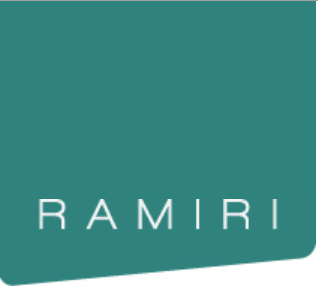RAMIRI Handbook Index
Introduction
Chapter 1: Making the Case and Setting the Scene
1.1. Introduction
1.2. Definition of a Research Infrastructure and its pan-European interest
1.3. Why is good governance of RIs so important, and why in particular for Europe?
1.4. Research, Development and Innovation: meaning and how RIs can contribute
1.5. Shareholders and Stakeholders: expectations and communication
1.6. RAMIRI Training Slides
Chapter 2: Life Cycle of a Research Infrastructure
2.1. Introduction and definition of the life-cycle phases
2.1.1 Initial conception and preparation: the incubation phase
2.1.2 Conceptual design phase
2.1.3 Executive and technical design phase
2.1.4 Construction phase
2.1.5 Commissioning and operation
2.1.6 Decommissioning and/or major upgrade and new life-cycle
2.1.7 The FP7/ESFRI “Preparatory Phase”
2.2. Project Cycles and Project Management
2.3. RAMIRI Training Slides
Chapter 3: Legal and Governance Issues
3.1. Introduction
3.2. Governance – Management interplay
3.3. Negotiating and developing the governance and scope
3.4. The basic elements of a legal structure
3.5. The choice between alternative legal structures
3.6. The European Research Infrastructure Consortium-ERIC
3.7. Commonalities and differences between single-site and distributed RIs
3.8. Definition and role of partners, regional partners, and regional RIs
3.9. RAMIRI Training Slides
Chapter 4: Finance
4.1. Introduction
4.1.1 Characteristics of RIs with respect to financial issues
4.1.2 Content of the chapter
4.2. Estimating, costing and budgeting the needs of a RI
4.2.1 Main principles and steps of budgeting in the context of a RI
4.2.2 Main cost categories and their characteristics
4.2.3 Overview of the spending profile and evolution of the cost distribution of various types of RIs
4.2.3.1 Single site hardware based RIs
4.2.3.2 Virtual RIs
4.2.3.3 Computing centres
4.3. Funding sources
4.3.1 Overview of the various types of funding
4.3.1.1 National funding
4.3.1.2 European funding
4.3.1.3 International funding
4.3.1.4 Philanthropic organisations / donations
4.3.2 Funding and Governance
4.4. Financial instruments
4.4.1 Loans (EIB/RSFF, banks/commercial)
4.4.2 Public Private Partnerships
4.5. RAMIRI Training Slides
Chapter 5: Human Resources
5.1. Introduction
5.2. General framework
5.3. Staffing and its evolution during the facility life time
5.4. Commonalities and differences in single site and distributed RIs, and in different countries – conditions of employment
5.5. Recruiting, staff evolution / career development / mobility, integration and support /attractiveness, equal opportunities, work/life balance
5.5.1 Recruitment
5.5.2 Staff evolution / career development / mobility
5.5.3 Integration and support – attractiveness
5.5.4 Equal opportunities
5.5.5 Work / life balance
5.6. Case studies on Human Resources for Distributed Infrastructures
5.6.1 Case Studies
5.6.2 Human Resource Planning
5.6.3 Recruiting and Attractiveness
5.7. RAMIRI Training Slides
Chapter 6: Research Infrastructure Management
6.1. Introduction
6.2. Managing an established facility (general outline)
6.3. How to set the course: mission, vision and strategic planning
6.4. How to ensure quality and users satisfaction
6.5. How to communicate
6.6. How to liaise with Industry
6.7. How to develop sustainability and fund raising
6.8. RAMIRI Training Slides
Useful Reference Texts and Definitions
Editorial
 RAMIRI stands for Realising and Managing International Research Infrastructures (RIs). The projects RAMIRI and RAMIRI 2 were funded by the European Commission under FP7, in the periods 2008-2010 (project ID: 226446) and 2010-2013 (project ID: 262567). The projects delivered a training and networking programme for people involved in planning and managing international RIs in the EU (and Associated States).
RAMIRI stands for Realising and Managing International Research Infrastructures (RIs). The projects RAMIRI and RAMIRI 2 were funded by the European Commission under FP7, in the periods 2008-2010 (project ID: 226446) and 2010-2013 (project ID: 262567). The projects delivered a training and networking programme for people involved in planning and managing international RIs in the EU (and Associated States).


